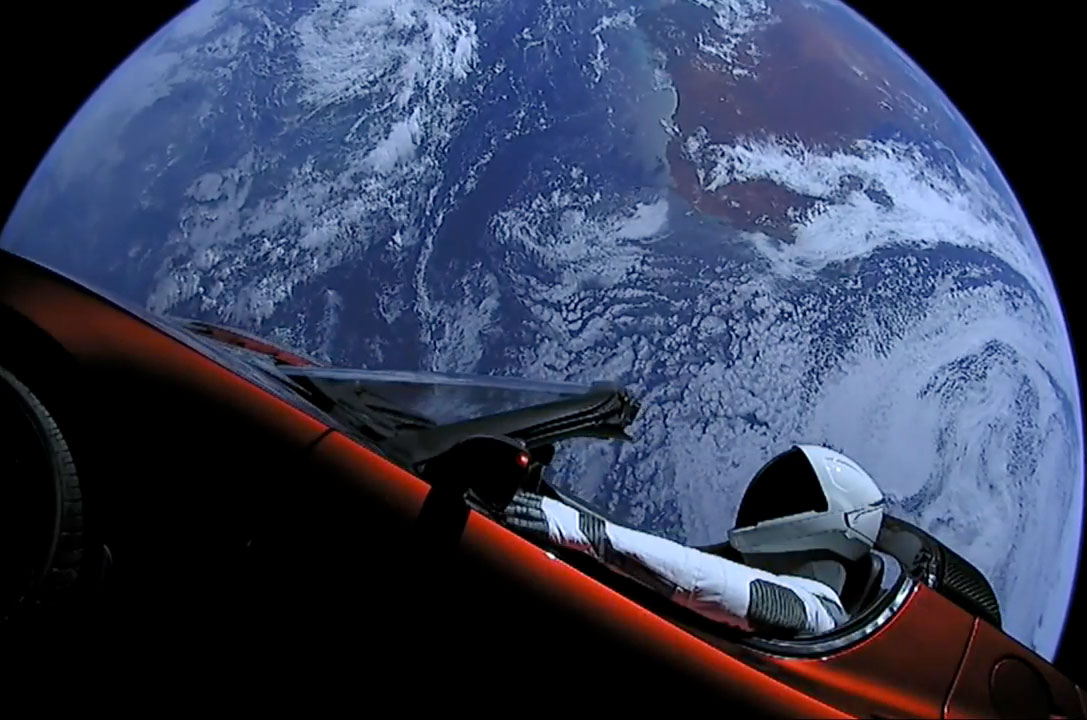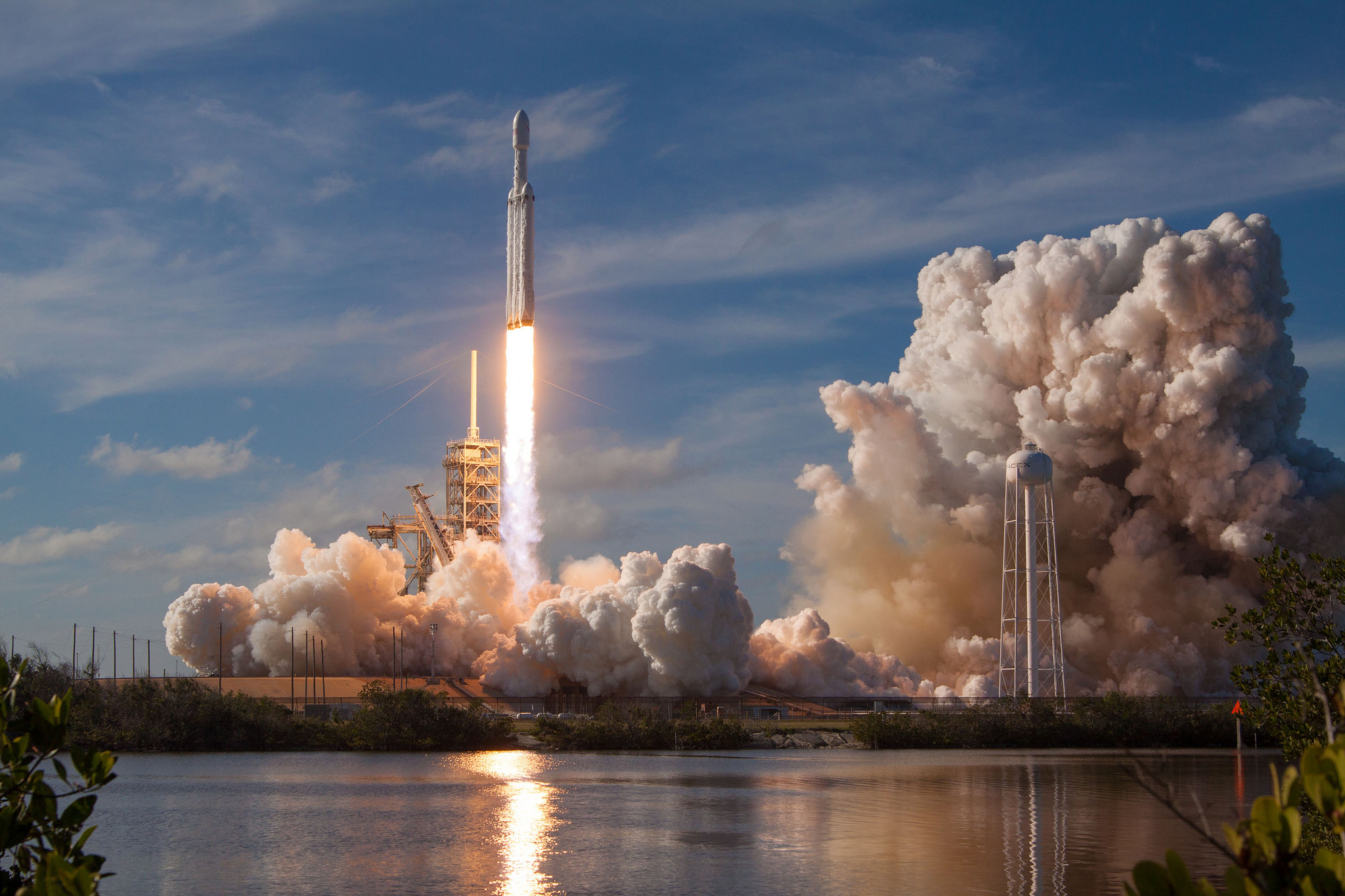A Year After SpaceX's 1st Falcon Heavy Launch, Starman (and a Tesla) Sail On
Elon Musk's car has now been exploring the final frontier for a full year.
On Feb. 6, 2018, SpaceX's huge Falcon Heavy rocket aced its maiden flight, launching Musk's cherry-red Tesla Roadster and its mannequin driver, Starman, into orbit around the sun.
The Roadster is journeying on an elliptical path, which takes it out beyond Mars at aphelion (the most distant point from the sun) and near Earth's orbit at perihelion (closest solar approach). [In Photos: SpaceX's 1st Falcon Heavy Rocket Test Launch Success!]
Car and driver moved beyond Mars' orbit in early November, and they're still out there now, more than 226 million miles (364 million kilometers) from Earth, according to the tracking site whereisroadster.com. And the Roadster will stay out in those distant reaches for a while yet — its orbital period is about 557 Earth days.
The Tesla will likely make quite a few laps around the sun before its deep-space adventure comes to an end. An orbit-modeling study performed last year predicted that the space car will eventually slam into either Venus or Earth, probably within the next few tens of millions of years. But there's just a 6 percent chance that it will hit Earth within the next million years, and a 2.5 percent chance of a Venus impact in that same timespan, the study's authors calculated.
Related: Track Tesla in Space
Debut flights of any rocket are risky and therefore often carry dummy payloads rather than valuable operational spacecraft. Musk said he chose the Roadster and Starman as dummies for fun, though it wouldn't be shocking if marketing played a major role as well. Musk runs both SpaceX and Tesla, so the Falcon Heavy's debut was a nice piece of cross-promotion.
Breaking space news, the latest updates on rocket launches, skywatching events and more!
Falcon Heavy will soon loft its first bona fide space vehicle, if all goes according to plan. The giant rocket's second flight, which is currently targeted for March 7, will deliver the 6.6-ton (6 metric tons) Arabsat 6A communications satellite to orbit for Saudi Arabia.
The two-stage Falcon Heavy, the most powerful rocket flying today, is an evolution of SpaceX's workhorse Falcon 9 launcher. The Heavy's first stage consists of three modified Falcon 9 first stages strapped together.
These first-stage boosters are designed to be reusable. On the first Falcon Heavy flight, the two side boosters aced their touchdowns, which took place on terra firma at Cape Canaveral Air Force Station in Florida. The central core barely missed its target, a SpaceX "drone ship" stationed in the Atlantic Ocean off the Florida coast.
Editor's note: The original version of this story incorrectly used "apogee" and "perigee," terms that refer to objects orbiting Earth, instead of "aphelion" and "perihelion," which apply to objects orbiting the sun.
Mike Wall's book about the search for alien life, "Out There," was published in November 2018 by Grand Central Publishing. Follow him on Twitter @michaeldwall. Follow us @Spacedotcom or Facebook. Originally published on Space.com.

Michael Wall is a Senior Space Writer with Space.com and joined the team in 2010. He primarily covers exoplanets, spaceflight and military space, but has been known to dabble in the space art beat. His book about the search for alien life, "Out There," was published on Nov. 13, 2018. Before becoming a science writer, Michael worked as a herpetologist and wildlife biologist. He has a Ph.D. in evolutionary biology from the University of Sydney, Australia, a bachelor's degree from the University of Arizona, and a graduate certificate in science writing from the University of California, Santa Cruz. To find out what his latest project is, you can follow Michael on Twitter.


